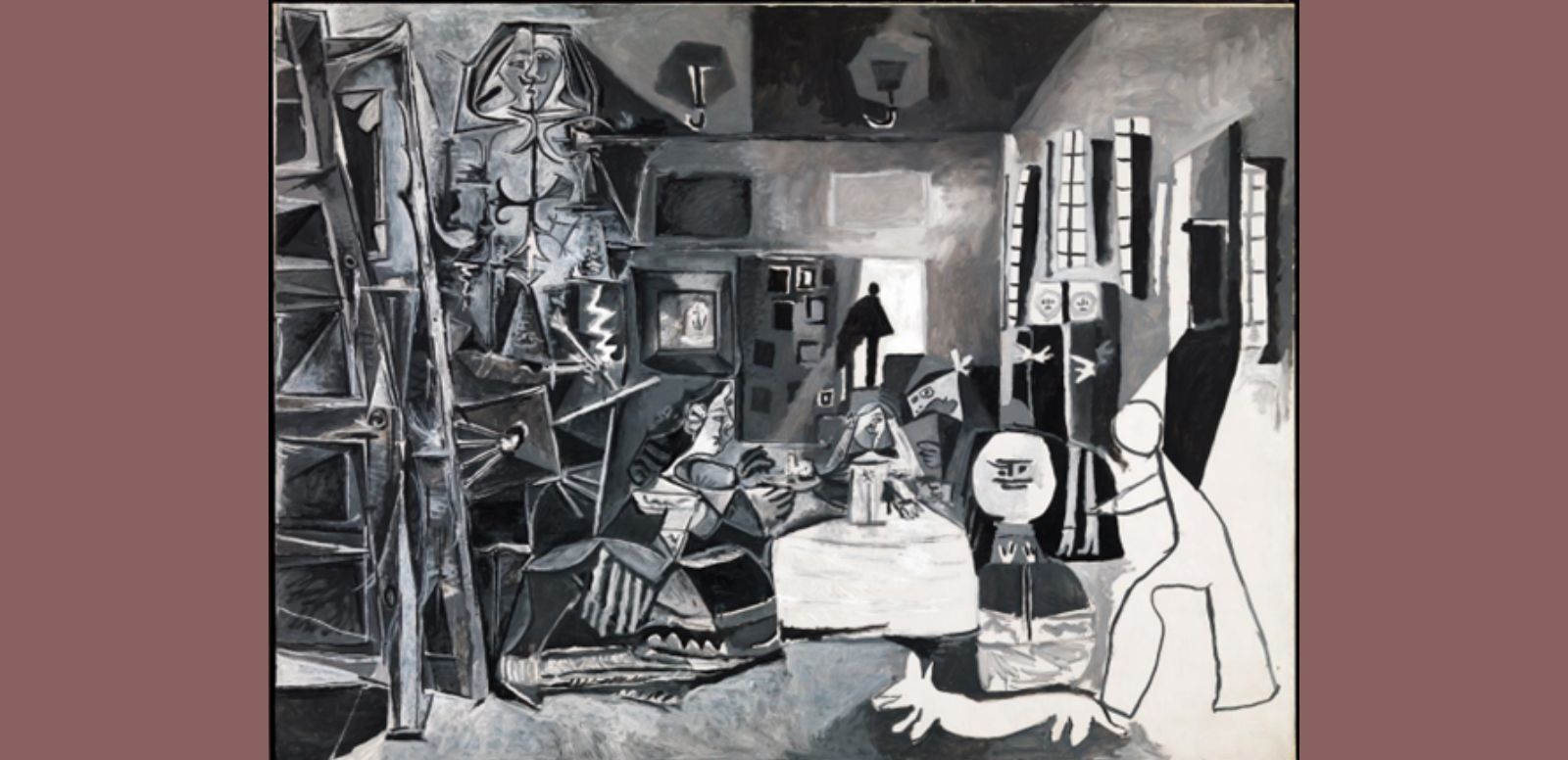
Museu Picasso Barcelona
© Sucesión Picasso, VEGAP, Madrid, 2023
Picasso's first encounter with Velázquez's Las Meninas (1656) occurred when he was 14 years old, during a visit to the masterpieces of the Prado Museum, which he made with his father. However, it was at the age of 76, after a lifetime of experiences, when he created this canvas that served as the starting point of the series in which he reinterpreted Velázquez's iconic painting.
The day before making this painting, Picasso brought to life a preliminary sketch that anticipated essential aspects, such as the large painter's figure and the importance given to José Nieto, the palace's innkeeper. In his desire to reinterpret Las Meninas (1656) according to his own style, Picasso opted for a horizontal format in a first version, as opposed to the vertical format of Velázquez's original work.
In his painting, Picasso incorporates all the characters present in Velázquez's composition, but gives them a distinctive approach. For example, in this new version, the Infanta Margarita is no longer the protagonist. Instead, Picasso gives that place to Velázquez by increasing her size until she practically occupies the entire canvas.
Furthermore, by moving from left to right in the composition, the figures undergo a simplification and become two-dimensional and caricatured, so much so that Nicolasito Pertusato, an Italian dwarf of noble origin who possibly suffered from a growth disorder, is reduced to a silhouette.
This simplification is also manifested in the representation of space. Picasso chooses to incorporate large windows that allow light to enter, while at the same time limiting himself to a black and white palette. The place where Picasso created this series, La Californie in Cannes, France, plays a pivotal role in understanding his interest in exploring light and color, as the compositions he produced in this studio are notable for incorporating large windows that provide access to light.
Of all the series that Picasso painted in the 1950s, this one, consisting of sixteen group works, is the only one that has been preserved in its entirety. Today, it is still preserved by the Museu Picasso Barcelona, after Picasso gave it to the institution in honor of its founder, Jaume Sabartés.
Sources:
Museu Picasso Barcelona:
https://blogmuseupicassobcn.org/es/coleccion/obra-de-arte/las-meninas-9
https://museupicassobcn.cat/es/actualidad/descubre-online/los-habitantes-del-museo-las-meninas
https://museupicassobcn.cat/es/actualidad/descubre-online/la-cronologia-de-las-meninas-de-picasso
Museo Universidad de Navarra:

